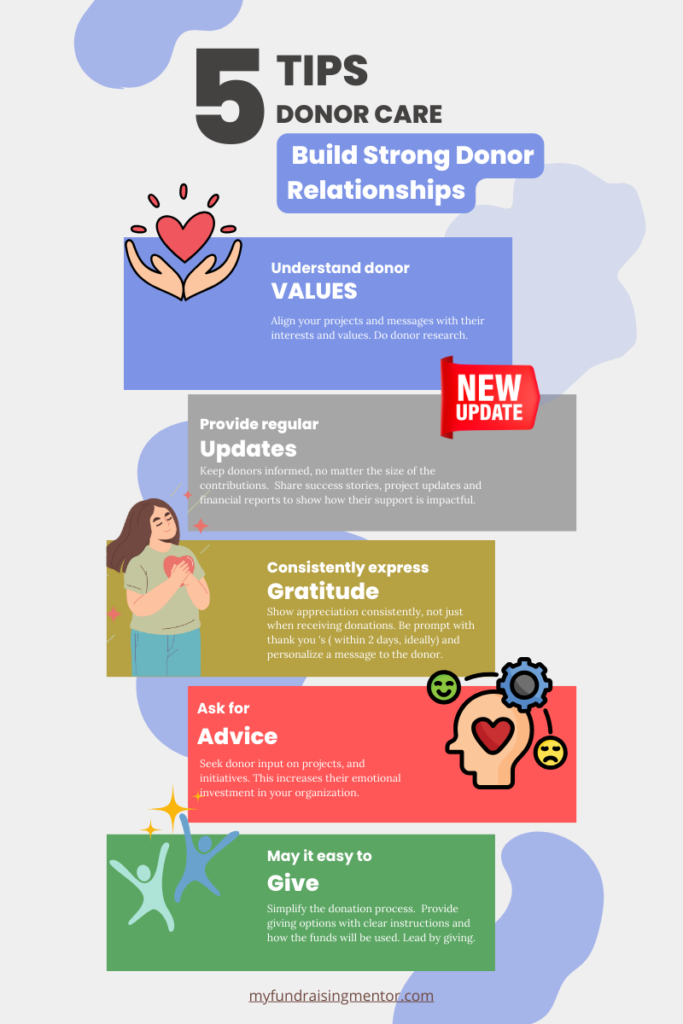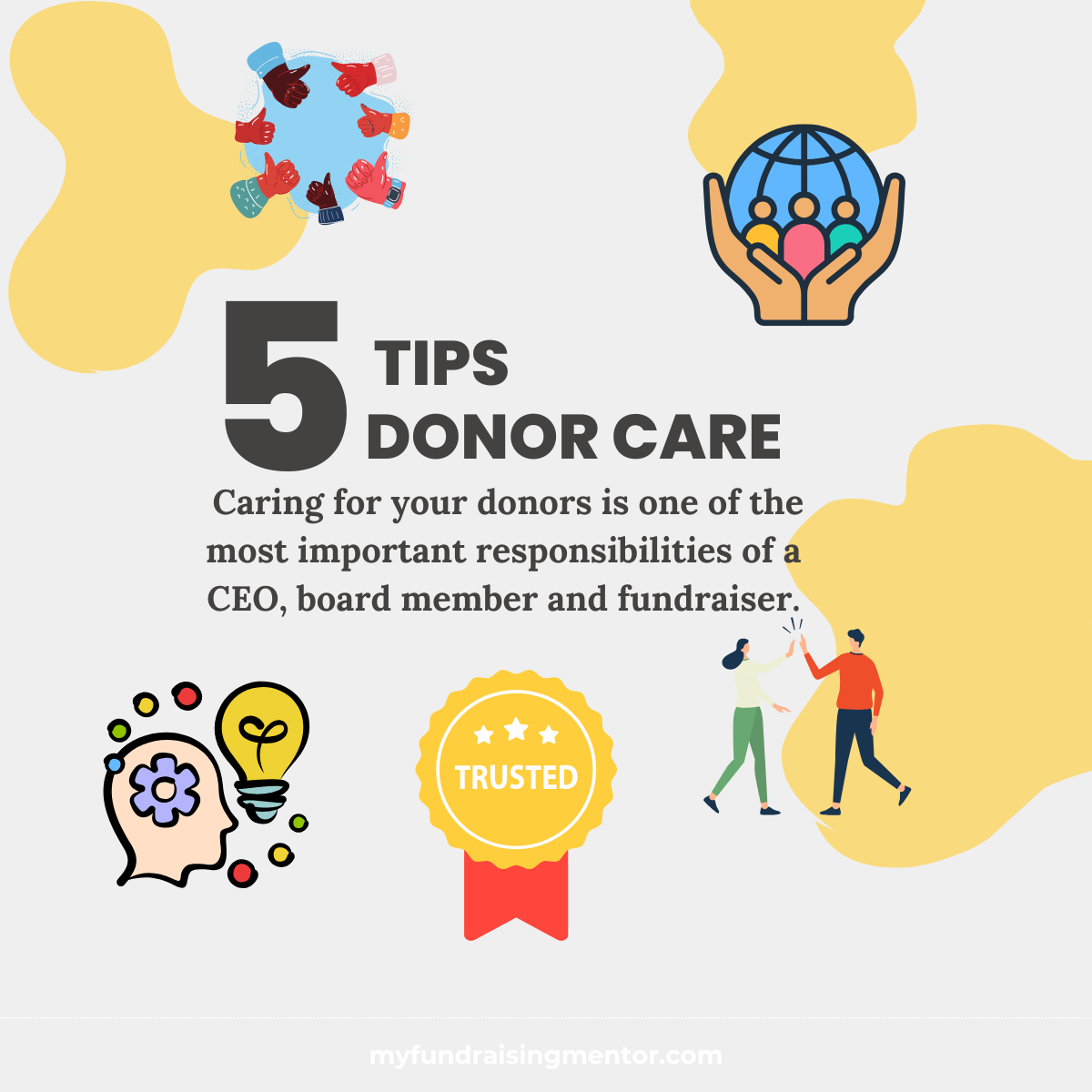Caring for your donors is one of the most crucial responsibilities for a CEO, board member, or fundraiser in any nonprofit organization. Establishing and nurturing donor relationships is essential for securing funds and fostering a loyal and invested community that believes in your mission. Here’s a deeper discussion of building and maintaining these relationships and five key tips to guide your efforts.

The foundation of a successful donor relationship lies in viewing it as a two-way interaction rather than a mere transaction. While providing donation receipts or impact reports is necessary, the real goal is cultivating genuine connections. This means recognizing and valuing donors as partners in your mission. When you emphasize relationship-building, you create a sense of community and belonging among your supporters. This also encourages long-term engagement, not just one-time donations.
1. Understand Donor Values
To effectively connect with your donors, it’s essential to understand their values and motivations. Conduct donor research to gain insights into what drives their philanthropic decisions. This knowledge will help you tailor your projects and messaging in ways that resonate with them. For example, if a donor is passionate about education, ensure your communications highlight educational initiatives and their positive impact on students and communities. Aligning your organization’s mission with your donors’ values makes them more likely to engage and support your cause.
2. Provide Regular Updates
Effective communication is key to maintaining strong donor relationships. It’s important to keep donors informed about your organization’s activities, no matter the size of their contributions. Regular updates that include project summaries, success stories, and financial reports demonstrate transparency and show how their support directly influences your work. Highlight specific outcomes made possible by donations, whether a new program or a community initiative. Regular communication helps reinforce their sense of involvement. It reminds them of the vital role they play in achieving your mission.
3. Consistently Express Gratitude
Gratitude should be a continuous practice rather than a one-time gesture. Showing consistent appreciation cultivates goodwill and strengthens relationships. Be prompt in your expressions of thanks—aim to send personalized acknowledgment messages within two days of receiving a gift. A handwritten note, a phone call, or a customized email can go a long way in making donors feel valued. Additionally, consider recognizing their contributions publicly (with their permission) in newsletters, on social media, or at events. This public reinforcement of their generosity can further invigorate their connection to your mission.
4. Ask for Advice
Involve your donors in decision-making by seeking their advice on projects, initiatives, or organizational strategies. This demonstrates that you value their insights and fosters an emotional investment in your organization’s success. By framing their involvement as advice-seeking, you empower donors and make them feel like integral members of your team. This collaborative approach can lead to enhanced loyalty and advocacy on their part, positively amplifying your reach and influence.
Building and maintaining strong donor relationships is a critical responsibility in the nonprofit sector. By focusing on relationships, understanding donor values, providing regular updates, expressing gratitude, and seeking donor input, you set the foundation for lasting and meaningful connections. Remember that every interaction is an opportunity to reinforce the bond between your organization and its supporters. Investing in these relationships will ultimately lead to greater loyalty and sustainability for your organization, allowing you to further your mission and significantly impact the community.

